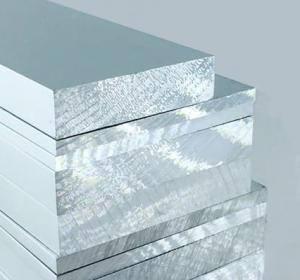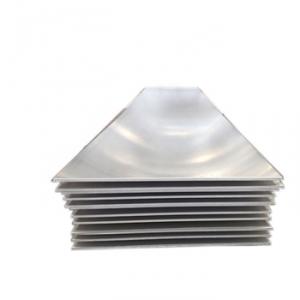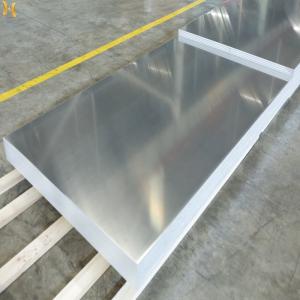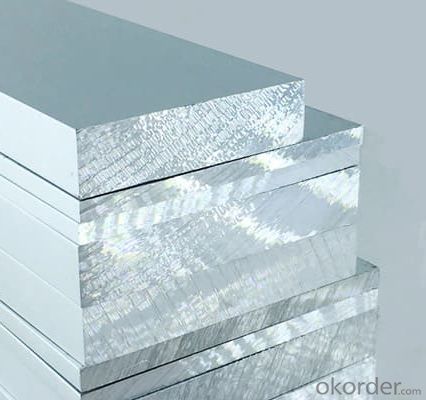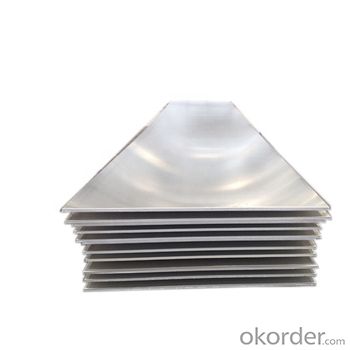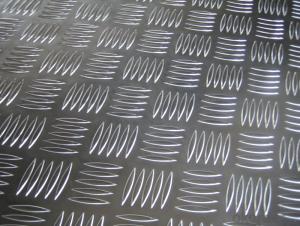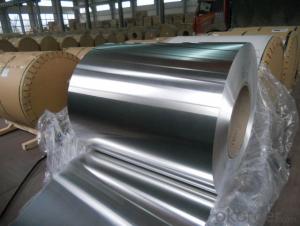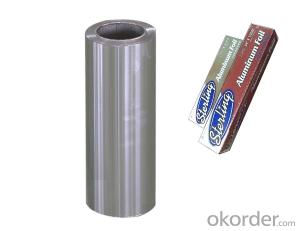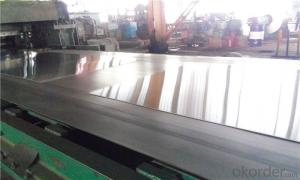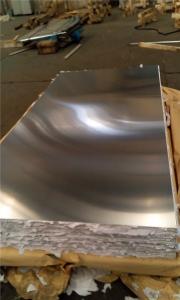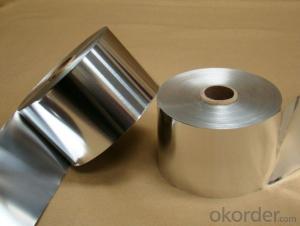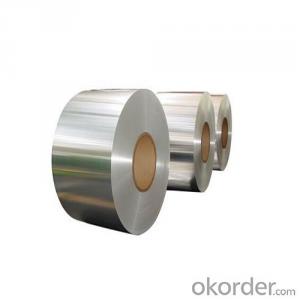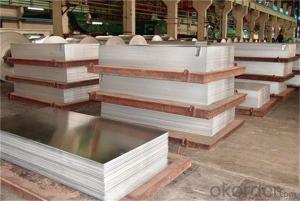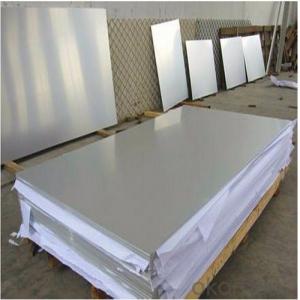Marine Grade 10mm Thick Aluminum Sheet 5052-H32 Plate
- Loading Port:
- Shanghai
- Payment Terms:
- TT or LC
- Min Order Qty:
- 6 m.t.
- Supply Capability:
- 3000 m.t./month
OKorder Service Pledge
OKorder Financial Service
You Might Also Like
Parameter | |||||||||
Item | Marine Grade 10mm Thick Aluminum Sheet 5052-h32 Plate | ||||||||
Material | 7000 series, such as AL7075 for aviation field | ||||||||
Surface treatment | Mill finish, anodized | ||||||||
Size | custom made | ||||||||
Temper | T3-T8,H18 | ||||||||
Supply Ability | 800 Ton / Month | ||||||||
Port | SHANGHAI | ||||||||
Good Package | wooden pallets/ wooden cases | ||||||||
Shipment Time | 1-3weeks | ||||||||
After Sales Service | Available by our staff with more than 10 years of working experience in Tent Pole Field | ||||||||
Chemical Composition | |||||||||
Grade | Si | Fe | Cu | Mn | Mg | Cr | Zn | Ti | Al |
7075 | 0.4 | 0.5 | 1.2-2.0 | 0.3 | 2.1-2.9 | 0.18-0.28 | 5.1-6.1 | 0.2 | Balance |
6061 | 0.4-0.8 | 0.7 | 0.15-0.4 | 0.15 | 0.8-1.2 | 0.04-0.35 | 0.25 | 0.15 | Balance |
5082 | 0.2 | 0.35 | 0.15 | 0.15 | 4.0-5.0 | 0.15 | 0.25 | 0.1 | Balance |
Mechanical Properties | |||||
Grade | Temper | Thickness(mm) | Tensile Strength(Mpa) | Yield strength(Mpa) | Elongation(%) |
7075 | T6 | 0.4-0.8 | 525 | 460 | 6 |
>0.8-1.5 | 540 | 460 | 6 | ||
>1.5-3 | 540 | 470 | 7 | ||
>3.0-6 | 545 | 475 | 8 | ||
6061 | T6 | 0.4-100 | 290 | 240 | 6-10 |
5082 | H18 | >0.2-0.5 | 335 | - | 1 |
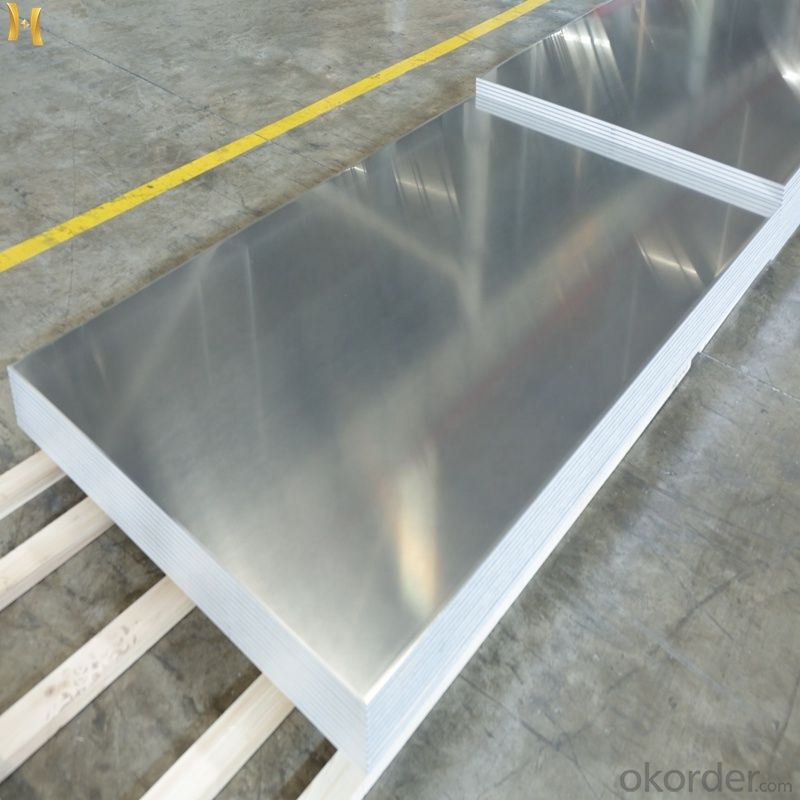
Why we choose Okorder.com?
Okorder.com is a professional and reliable online E-market place
Providing a variety of products with reasonable prices
High quality goods provided by factory suppliers
Shipping to over 200 countries.
One-stop sourcing
Dubai Logistic Complex
Okorder Quality Control?
We hold a very strict quality control system to check every connector of our products for your safety.
Okorder services for you
1.7*24 hours Hotline & Email Service
2. Your inquiry related to our products or prices will be replied in 24hrs.
3. Well-trained and experienced staffs to answer all your enquires in fluent English
4. OEM&ODM, any your customized demand we can help you to design and put into product.
5. Distributor ship are offered for your unique design and some our current models
- Q: Are the aluminum sheets suitable for manufacturing automotive parts?
- Automotive parts can be effectively manufactured using aluminum sheets. This material, known for its lightweight and durability, provides several advantages in automotive applications. With a high strength-to-weight ratio, it is ideal for producing parts that require strength without burdening the vehicle with excessive weight. Aluminum sheets find widespread use in the production of automotive body panels, including hoods, doors, and fenders. Their malleability facilitates easy shaping and forming, enabling manufacturers to create intricate designs and complex details. Moreover, aluminum exhibits excellent corrosion resistance, ensuring longevity and reduced maintenance for the automotive parts made from it. In addition, aluminum's exceptional thermal conductivity makes it a suitable choice for components that necessitate heat dissipation, such as radiators and heat exchangers. Its ability to conduct electricity also renders it valuable in the manufacturing of electrical components for vehicles. Overall, the utilization of aluminum sheets in automotive manufacturing offers numerous benefits. Their lightweight nature enhances fuel efficiency, while their strength and durability guarantee the structural integrity of the vehicle. Furthermore, aluminum's corrosion resistance and thermal conductivity make it a reliable option for a variety of automotive parts.
- Q: Can aluminum sheets be bent or formed without cracking or breaking?
- Yes, aluminum sheets can be bent or formed without cracking or breaking, but it depends on the thickness of the sheet and the method used for bending or forming. Aluminum is a highly malleable metal, which means it can be easily bent or formed into various shapes without breaking. However, if the sheet is too thin or the bending or forming process is done without proper care or precision, there is a risk of cracking or breaking. To avoid this, it is important to use appropriate tools and techniques, such as using a bending brake or a rolling machine, and ensuring that the sheet is not subjected to excessive force or stress during the process. Additionally, annealing the aluminum sheet before bending or forming can increase its flexibility and reduce the chance of cracking. Overall, with the right approach and precautions, aluminum sheets can be successfully bent or formed without cracking or breaking.
- Q: Can aluminum sheet be used for heat shielding?
- Yes, aluminum sheet can be used for heat shielding. Aluminum has a high thermal conductivity and excellent heat dissipation properties, making it an effective material for heat shielding applications. Its ability to reflect radiant heat also makes it suitable for use in thermal barriers and insulation systems. Additionally, aluminum sheet is lightweight, corrosion-resistant, and easily fabricated, making it a cost-effective choice for heat shielding in various industries such as aerospace, automotive, and electronics.
- Q: Consider an aluminum wire of diameter 0.580 mm and length 28.0 m. The resistivity of aluminum at 20.0°C is 2.82 10-8 Ω · m.(a) Find the resistance of this wire at 20.0°C. ___________Ω(b) If a 9.00-V battery is connected across the ends of the wire, find the current in the wire. __________A
- Resistivity Of Aluminum Wire
- Q: Can aluminum sheets be used for architectural facades?
- Yes, aluminum sheets can be used for architectural facades. Aluminum is a lightweight and durable material that is commonly used in construction due to its corrosion resistance and versatility. It can be easily shaped, cut, and formed into various sizes and designs, making it suitable for creating aesthetically pleasing architectural facades. Additionally, aluminum sheets offer excellent weathering properties, low maintenance requirements, and can be finished with different coatings to enhance their appearance and protection against environmental elements.
- Q: Is it possible to use aluminum sheets as a material for interior walls?
- <p>Yes, aluminum sheets can be used for interior walls. They are known for their durability, resistance to corrosion, and ease of maintenance. Aluminum sheets can also be painted or finished in various ways to match different interior design styles. They are lightweight, which makes them easy to install, and they provide good thermal insulation. However, it's important to consider the acoustic properties and the need for proper insulation to prevent condensation, especially in colder climates.</p>
- Q: Are aluminum sheets suitable for chemical storage applications?
- Yes, aluminum sheets are suitable for chemical storage applications. Aluminum is a corrosion-resistant material that can withstand exposure to various chemicals, making it a suitable choice for storing a wide range of chemicals safely.
- Q: why does the hardness of 2024 aluminum sheet not increase but decrease after thermal treatment?
- The hardness of 2024 aluminum sheet will decrease after thermal treatment(solution treatment), and it will increase after aging treatment.
- Q: Are the aluminum sheets suitable for architectural applications?
- Yes, aluminum sheets are highly suitable for architectural applications. Aluminum is a versatile material that offers numerous benefits for architectural projects. It is lightweight, durable, and resistant to corrosion, making it ideal for exterior applications. Aluminum sheets can be easily shaped, formed, and manipulated to create intricate designs and structures, allowing architects to bring their creative visions to life. Additionally, aluminum is a sustainable material as it is 100% recyclable, reducing the environmental impact of architectural projects. Overall, the use of aluminum sheets in architectural applications provides both aesthetic appeal and functional durability, making it a preferred choice for architects and designers.
- Q: How do you calculate the price and weight of aluminum sheet?
- Our company imports more materials. It will be much more expensive if you are short of itAluminum prices have gone up this year
Send your message to us
Marine Grade 10mm Thick Aluminum Sheet 5052-H32 Plate
- Loading Port:
- Shanghai
- Payment Terms:
- TT or LC
- Min Order Qty:
- 6 m.t.
- Supply Capability:
- 3000 m.t./month
OKorder Service Pledge
OKorder Financial Service
Similar products
Hot products
Hot Searches
Related keywords
